Photo





What are you doing in my swamp, sparrow?! Today we received several different songbirds including this caught-caught Swamp Sparrow with a broken leg. We have splinted the leg and we hope with time and medication the fracture will heal successfully. As their name suggests, this bird species lives in wetlands with tall reed-y vegetation for them to hide in. A paper published in 2018 (Lachlan et al.) found that much like how human cultural quirks are passed down from one generation to the next, the song of Swamp Sparrows has remained constant for generations — possibly up to 1,000 years. Instead of embracing novel variations in song, Swamp Sparrows instead conform to the singing of older birds and over time refine their song to resemble the style of songs that they hear most often. Like humans, these song-traditions do vary slightly by location — just like how family traditions may change slightly when you move to a new area — but this bias towards conformity has kept the song of this sparrow practically the same in every wetland for generation after generation.
48 notes
·
View notes
Photo

Hurricane Ian's impacts to wildlife and humans reach beyond Florida — we received several waterlogged and weak animals caught up in the remnants of the storm last weekend including this squirrel. We also received a heartbreaking call from a woman in Florida who had found a tiny baby squirrel right before Ian hit and asked us for advice on how to keep the squirrel stable as the hurricane passed overhead, as none of the local rehabbers she reached out for help were able to return her calls, and as a last ditch effort to find help she called us due to having connections to the Roanoke area. We took two lessons from this call — first, that even in the darkest of times there are always people who go above and beyond their moral duty to help. Second, wildlife is a shared experience for everyone — while state lines divide us, sometimes by thousands of miles, we share a love for the wild animals that live alongside us. We deeply hope that she (and the squirrel) are safe, and please keep an eye out for wildlife in need of help no matter where you hail from.
#squirrel#hurricane ian#florida#roanokeva#eastern gray squirrel#wildlife rescue#wildlife rehab#gray squirrel
14 notes
·
View notes
Photo
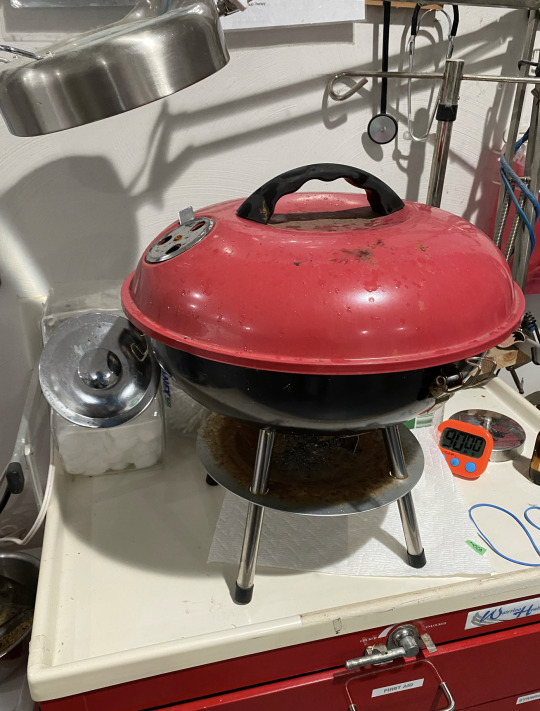

We have been brought animals in a lot of unusual containers. From herons from hikers in a backpack, woodpeckers in an office trash can, and opossums in an empty coffee cup, we've seen a lot of creative ways to contain injured wildlife when there aren't boxes around! This Northern Cardinal was caught by a cat and injured -- his quick-thinking rescuer didn't have any kind of container to put him in other than this small grill! Thanks to her quick efforts getting him to us he is recovering from several cat-inflicted injuries.
377 notes
·
View notes
Photo


PSA: it may be getting colder but there are still Ruby-throated Hummingbirds moving through! Keep your feeders up and filled until the end of the month-- by then nearly all of them will have moved through. Keeping your feeders up will not prevent hummingbirds from migrating and if anything will help young birds, birds disrupted by storms, and stragglers make their way to the tropics.
586 notes
·
View notes
Photo

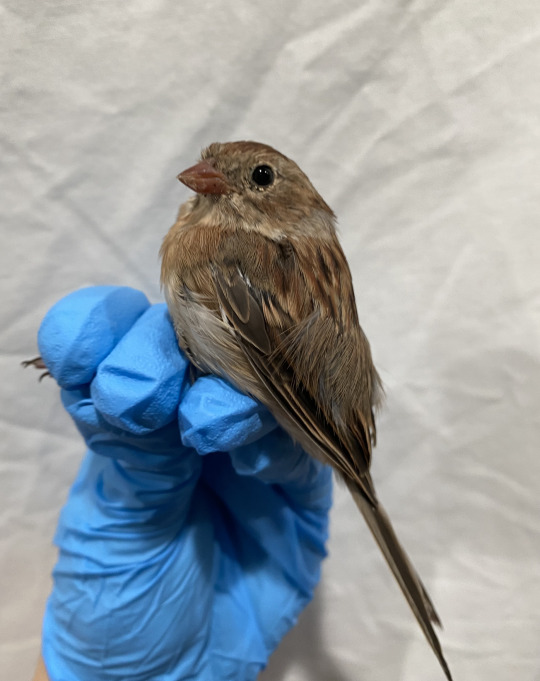
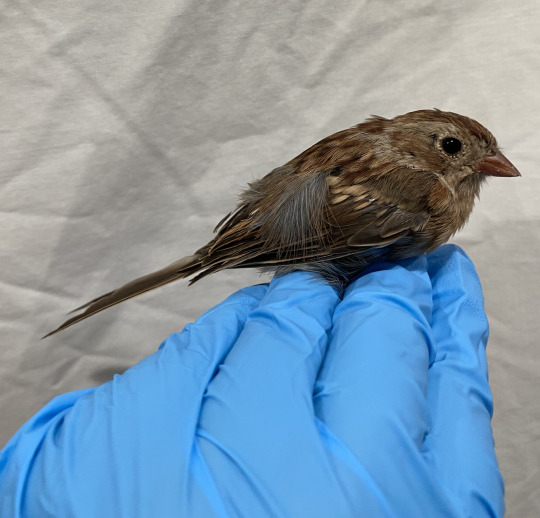


This tiny bird species has declined by almost 70% in only 50 years — a wildlife rescuer found this tiny bird near her doorstep on her farm in Giles County and noticed it couldn’t fly. Weighing in at only eleven grams (that’s two sheets of paper!), this Field Sparrow was caught by a cat and cannot fly (in addition to missing all but a few of his tail feathers!) and is on pain medications and antibiotics to manage his injuries. Field Sparrows are in need of conservation management — native grassland and shrubland management has helped protect this species’ population from free-falling, but urban and suburban development has likely permanently reduced the chance of this species making a full rebound because they cannot survive in heavily human-used areas. While these tiny little birds aren’t as flashy and impressive as eagles and other charismatic animals they are just as important to maintaining a healthy environment. They may be small and unassuming but that doesn’t mean they are not an important part of our world.
#field sparrow#sparrow#sparrows#bird#birds#wildlife#wildlife rescue#wildlife rehab#virginia#giles county
35 notes
·
View notes
Photo


Ever seen a sleeping hawk? This Red-shouldered Hawk looks rather goofy without his head but tucking your head between your shoulders is actually a common sleeping position for most birds. In fact, preserved dinosaurs have been discovered in similar sleeping positions to modern birds. Birds don’t always tuck their head behind their shoulders but there seems to be advantages (and disadvantages) for doing so. One study found that migrating warblers who are low on fat stores sleep in this position to conserve energy in a deeper sleep while warblers with ample fat supplies sleep with their heads exposed, facing forward! Those that slept with their heads tucked reacted slower to noises of potential predators while those who slept more on alert could quickly react to any potential danger. Some other reasons for head tucking can be body temperature regulation (keeping warm) and feeling safe and secure.
192 notes
·
View notes
Photo



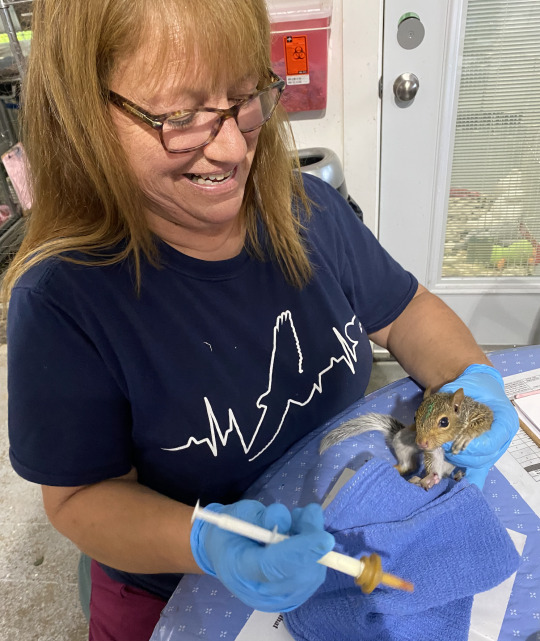
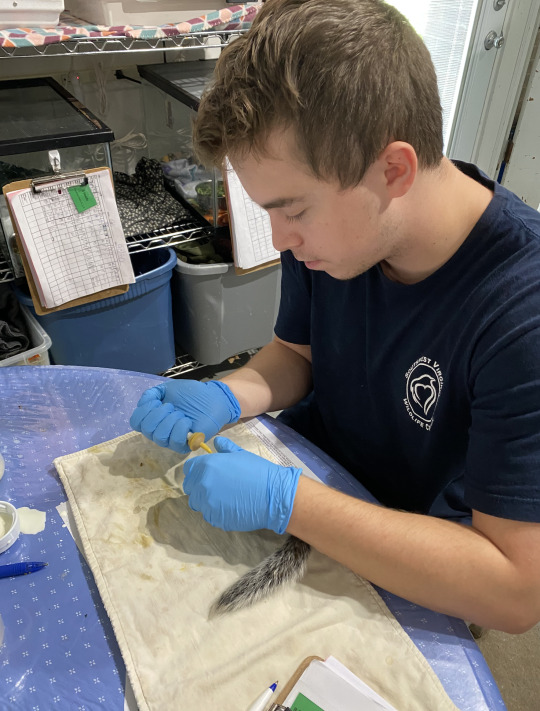
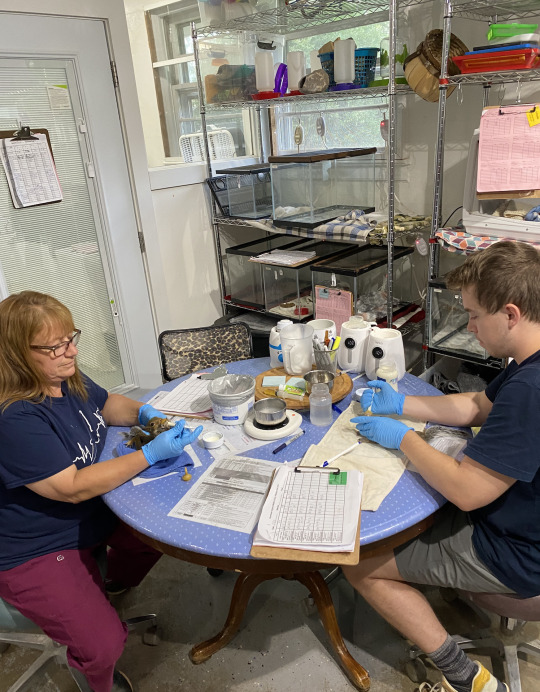
Feeding squirrels in wildlife rehab is no easy feat! There is a science to wildlife rehab — from weighing each squirrel daily to calculate the amount of formula needed, to doing physical exams to make sure they are developing well — it's a tall order but Casey and Kristin make it look easy! All of the babies pictured here are Eastern Gray Squirrels, the most common squirrel in Virginia. We have a total of five squirrel species: this one, Fox Squirrels, Red Squirrels, Southern Flying Squirrels, and the endangered Northern Flying Squirrel!
#squirrel#squirrels#graysquirrel#wildlife rehab#wildlife#mammals#animal rescue#wildlife rescue#animal husbandry#virginia#roanokeva
6 notes
·
View notes
Photo

Come out and stop by our booth at the inaugural Southwest Virginia Pride Fest in Vinton! We’re excited to be invited and hope to see you there!
4 notes
·
View notes
Video
Is it dinner time? Waking up from a looooong sleep, these young Virginia Opossums smell food and are eager to get to chowing down... riiiight after they check out the camera, first! Opossums are super cute but they have to get a carefully balanced diet in order to grow big and healthy -- while it is tempting to want one as a pet, keep in mind these are wild animals and should be kept as wild animals. Robbing them of a chance to be wild is against their best interest.
457 notes
·
View notes
Photo
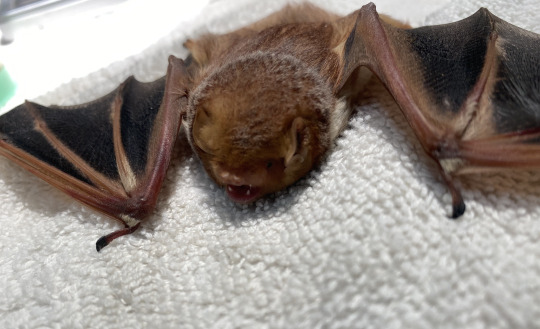

We have received several Eastern Red Bats in the past few weeks, all of whom were hit by cars. This is one of them, who was found plastered in a car grill before being removed and brought to us. While it may seem like a strange thing to occur this species is notorious for being hit by cars and landing in rehab during the spring and fall when they are migrating. Please be on the lookout when you drive as birds, mammals, and reptiles are all on the move as the seasons change!
14 notes
·
View notes
Photo

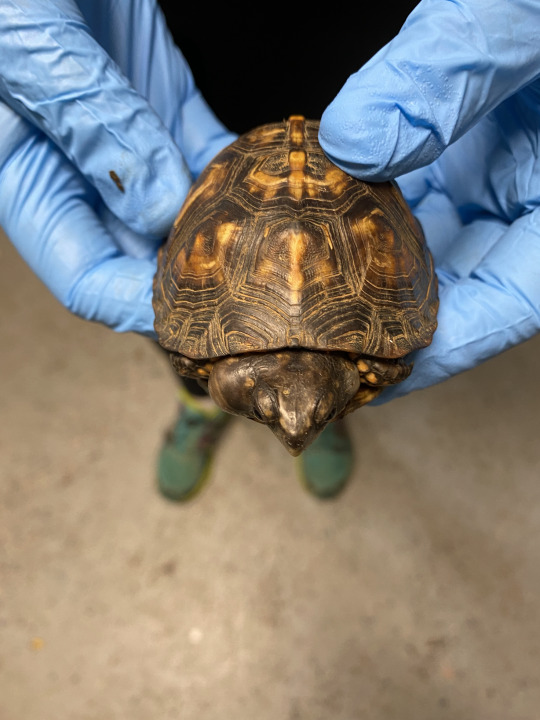

Turtle time! Turtle expert and enthusiast Kaitlyn examined this young Eastern Box Turtle that was admitted with a bad ear infection. Ear infections are a common but serious ailment we see in many of our box turtle patients — while infections, parasites, and death are a part of the natural cycle of life, some scientific literature suggests that the increase in prevalence of turtle ear infections isn't natural, but human caused. Some commonly used pesticides (including the formally used DDT) have been found to block vitamin A receptors in turtles, which leads them to not be able to fight off infections as easily. While many pesticides like DDT have been banned after showing the adverse impact they have on people and wildlife, banning a substance from use doesn't remove it from the environment and the pesticide can still impact wildlife for decades or centuries to come. This is the price humanity pays for our actions, and our responsibility as wildlife rehabbers is to try and make it right again.
#turtle#turtles#wildlife#box turtle#eastern box turtle#wildlife rehab#herps#ear infection#ddt#pesticides
44 notes
·
View notes
Video
Not bad for a bird that was hit by a car a few weeks ago! This young Blue Jay was rescued off of Starkey road in Roanoke suffering from trauma to the chest and head that prevented this bird from being able to move correctly. With medication, supportive care, and rest this youngster made a miraculous recovery in a short period of time and was returned back home! Blue Jays are actually brown -- their feathers contain the pigment melanin -- but the way the feathers are constructed refracts light to make them appear blue to our eyes. Most blues in the animal world are structural colors and true blue pigment in nature is exceedingly rare.
22 notes
·
View notes
Photo
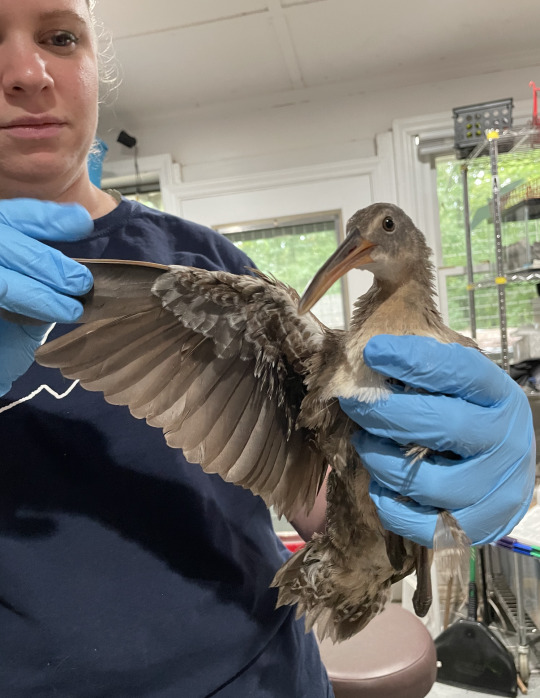
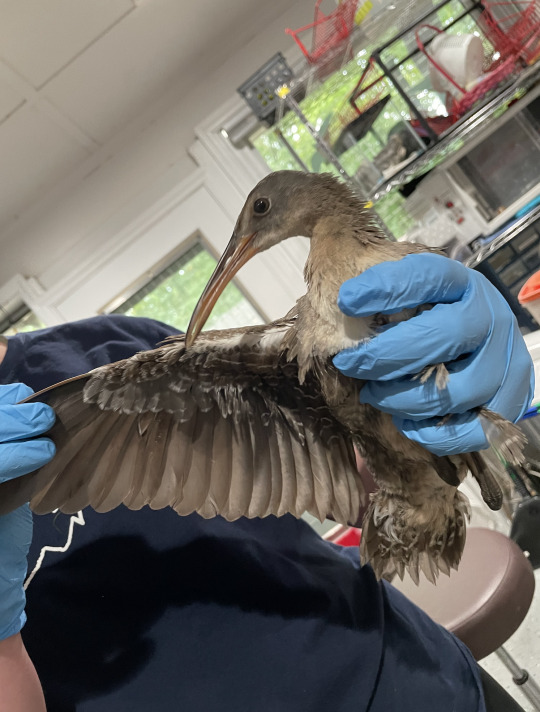
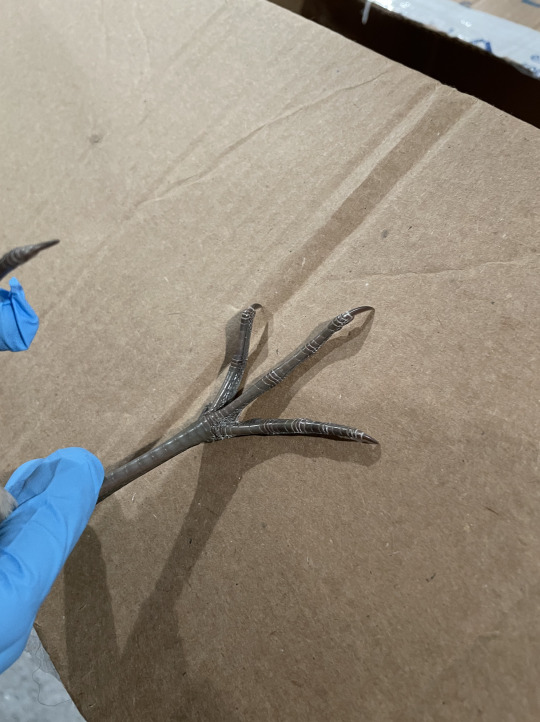
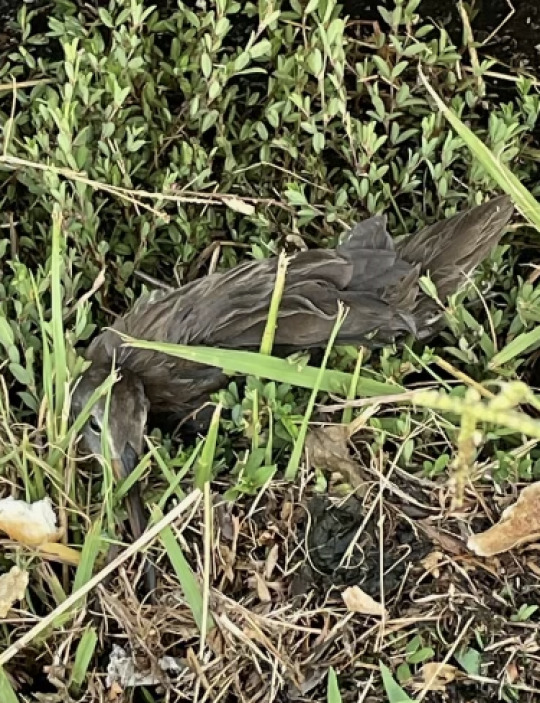
ANOTHER unusual bird! This is a juvenile Clapper Rail, a secretive coastal marsh species that is only found inland during migration (currently ongoing) or if the bird has been displaced due to storms. Found in Patrick County by the rescuer (see last photo of the bird on the ground), this patient cannot stand and was likely injured in a collision. Clapper Rails have many adaptations allowing them to live near the ocean, including having special glands that allow them to drink sea water and eggs that can still hatch even after being submerged underwater for eighteen hours!
23 notes
·
View notes
Photo


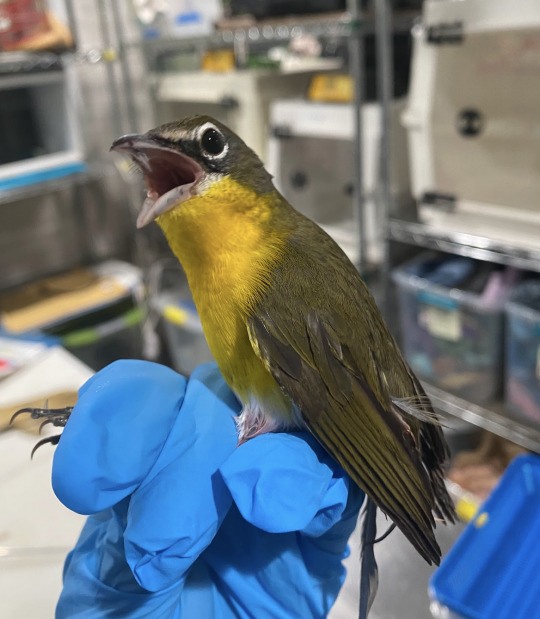
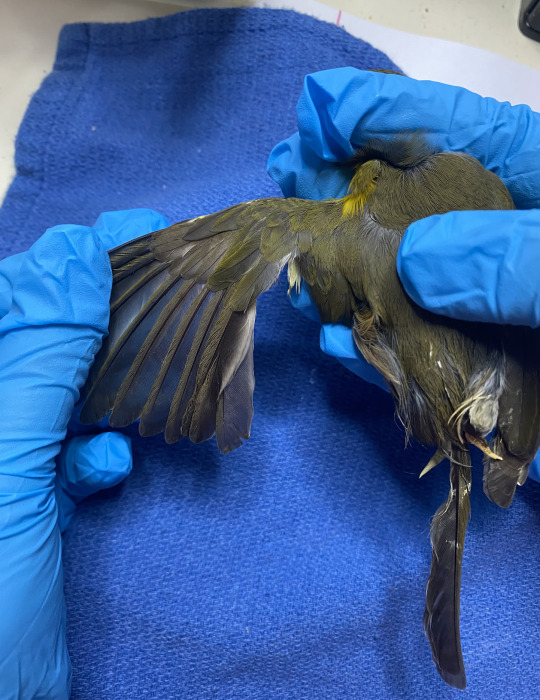
Cool bird alert! This bright fellow is a Yellow-breasted Chat, species that is so distinctive from all other songbirds that recently it was placed in it its own taxonomic family all by itself! This patient was caught by a cat and has several large wounds that required stitches to heal. Additionally, if the bird pulls through, the chat will have to stay at the Center until next spring because he is missing a bunch of flight feathers on one wing and most of his tail — and there is no way this bird will be able to regrow all those feathers completely and migrate to Central America before it becomes too cold. This species is often heard but rarely seen in the scrubby habitat it prefers — and is becoming rarer, as a third of the population has vanished since the 1960s.
80 notes
·
View notes
Photo

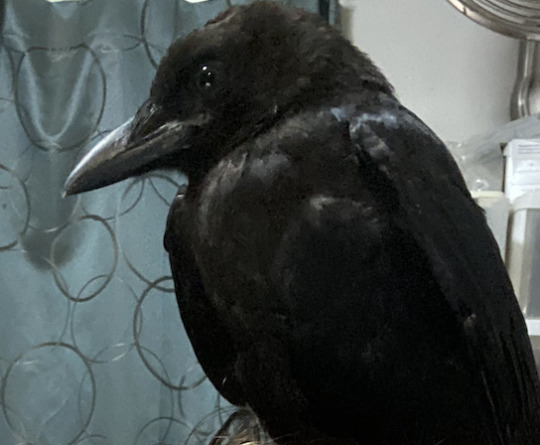
Staff member Lark expertly gave this injured American Crow recovery critical fluids — just like when you go to the hospital and get an IV bag of fluids, wildlife needs that too. However, because wild animals are not used to anything human or medical, being hooked up to an IV can be stressful or even dangerous for most patients. Instead, the majority of our patients upon intake get subcutaneous injections of fluids instead — which is faster, safer, and most importantly way less stressful for the animal than having an IV!
23 notes
·
View notes
Photo





Squirrels, squirrels and more squirrels! Staff Casey and intern Jilly (George Mason University student) worked most of the evening to get these little babies of all different ages settled! Squirrels are typically the first baby animals we get every year and are also usually the last babies we end the season with, sometimes as late as November. All of these squirrels came in from separate instances trees falling (some naturally, some caused by people). Only one out of four squirrel kits born live to their first birthday — it is a rough world out there for wild babies, and it takes a whole team of people (including overnight staff!) to raise these precious young ones to adulthood.
#squirrels#wildlife#eastern gray squirrels#wildlife rehab#eastern gray squirrel#wildlife rescue#animal rescue#mammals
11 notes
·
View notes
Video
Sweet freedom! This Great Crested Flycatcher zoomed out of our hands into the wild earlier this week. It is wild to think that in only a few months this bird will be migrating down to Central America to spend the winter. Hopefully this patient will live a good life and return back to Virginia next spring. What’s awesome is this patient has been re-sighted over and over again post-release so we know he has managed to survive on his own! We wish we had permitting and funding band or radio tag our patients to truly know how long and how well they survive after being raised in captivity, but even the anecdotal evidence we receive is encouraging. We know that our work matters and truly it makes a difference for birds like this one who otherwise wouldn’t have had a chance.
#great crested flycatcher#flycatcher#eastern phoebe#bird#birds#wildlife rehab#wildlife rescue#animal rescue
43 notes
·
View notes